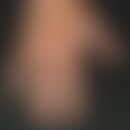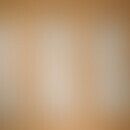Synonym(s)
DefinitionThis section has been translated automatically.
Wild herb belonging to the composites (see below composite plants). Mugwort is one of the most widespread wild herbs with a flowering period from June to September (significant for late summer pollinosis). Mugwort belongs to the wind-pollinating (anemophilous) composites.
OccurrenceThis section has been translated automatically.
Mainly located in Europe, Asia and Northwest Africa.
You might also be interested in
Field of application/useThis section has been translated automatically.
Many Artemisia species are widely used as kitchen spices, such as Artemisia arbrotanum (boar rue), Artemisia dracuculus (tarragon), Artemisia pontica (Roman wormwood), Artemisia vulgaris (mugwort).
Artemesia vulgaris l. is the parent plant of Artemisia herbae, the mugwort. Artemisia herbae received a negative monograph from the Commission E
Artemisia absinthicum is the parent plant of Absinthii herbae the wormwood herb.
Artemisia annua is the parent plant of Absinthii annuae herbae
Artemisia cina was formerly used as a worming agent.
Undesirable effectsThis section has been translated automatically.
After grass and tree pollen, mugwort pollen is the third most important allergen triggering pollinosis in Central Europe.
In addition to pollinosis, cross-reactive allergens can cause food allergies with urticaria and anaphylactic reactions (see mugwort pollen allergy below). Weakly sensitizing allergens are the sesquiterpene lactones psilostachyin and psilostachyin C, which only occur in low concentrations in mugwort.
ContraindicationThis section has been translated automatically.
Pregnancy - risk of inducing miscarriage, lactation - makes milk bitter.
Note(s)This section has been translated automatically.
Not a ready-made preparation; tea made from fresh or dried herb.
LiteratureThis section has been translated automatically.
- Arberer W (2008) Contact allergy and medicinal plants. JDDG 6: 15-24
- Hausen BM, Vieluf K (1997) Allergy plants, plant allergens. Ecomed Verlag Landsberg (Munich) 81-82.
- https://heilpflanzenschule.de/wp-content/uploads/2020/02/Beifu%C3%9F.pdf.
- https://www.mpg.de/12650921/mpikg_jb_2018




